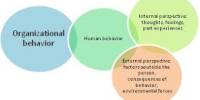About icao :The International Civil Aviation Organization (ICAO), pronounced /aɪˈkeɪoʊ/, (French: Organisation de l’aviation civile internationale, OACI), is aspecialized agency of the United Nations. It codifies the principles and techniques of international air navigation and fosters the planning and development of international air transport to ensure safe and orderly growth. Its headquarters are located in the Quartier International of Montreal,Quebec, Canada.
ICAOA – International Civil Aviation
Organization.
Year of
Establishment – 4 April, 1947
Head Quarter – Montreal, Canada.
Members – 190 contracting states.
History
Regulation of Aerial Navigation, created
by Paris Convention , 1919
Chicago Convention, 1944
Establishment of PICAO (Provisional body)
Establishment of ICAO (Permanent body)
On 14 December, the convention on International Civil Aviation came into force.
Aims and objectives :
Article–4 of ICAO convention mentioned 9 aims and objectives, summarized as follows –
■ Ensuring safe and orderly growth of international Civil aviation.
■ Encouraging the arts of aircraft design and operation.
■ Encouraging the development of airways, air ports and air navigation.
■ Preventing economic waste.
■ Ensuring the rights of contracting states.
Permanent and regional seats:
Over years ICAO established 7 regional offices –
APAC
MID
WACAF
SAM
NACC
ESAF
EUR/NAT
How it works:
■ ICAO, is made up of an Assembly, a council of limited membership with various subordinate bodies and a secretariat.
■ The chief officers are the president of the council and the secretary General.
■ The assembly is the sovereign body of ICAO
Activities :
■ Establishment of International standard, recommended practices and procedure, covering technical fields of aviation.
■ Development of satellite- based system for future communication, navigation, surveillance air traffic management.
■ Regional planning of air navigation facilities and services.
■ Adaptation of modern systems and techniques.
■ Reporting aircraft accident and incident data, all- weather operations, automation of air traffic services.
■ Prevent unlawful interference with Civil aviation.
ICAO And Climate Change
■ ICAO’s environmental committee consider market – based measures , but this is unlikely to lead to global action.
■ ICAO peruses developing countries to limit or reduce emissions from international aviation, under Kyoto protocol.
Criticism Of ICAO
■ Fails to Act on climate plans.
■ Launched a carbon calculator, which still yield misleading results.
■ Lackings to classify airspace and corresponding from of air traffic service.
■ Failed to address different formalized messages, used in planning airspace use and sir traffic control.
■ Failed to fulfill the requirement to complete information.
■ Failed to reach agreement regarding stricter noise standards.
■ Two leading officials, without a distinct delimitation of their jurisdiction.
Achievements :
■ Implementation of satellite technology that allows more direct flights, resulting less fuel burn and less pollution .
■ Gradual restoration of passenger’s confidence in International travel.
■ Traffic development in north America, Asia/Pacific, Africa, Middle East and Latin America.
■ Increase of total scheduled passenger traffic, generated by airlines, based on ICAO contracting parties.
■ World Airline passenger traffic is forecast to rebound with 4.4 percent growth in 2004.
Re-commendation :
■ To Act on climate plans, adopted by UN bodies.
■ To consider its choice on available technologies and their likely effects on privacy and Civil liberties.
■ To operate a process of systematic dialogue between ICAO and regional organization.
■ Fulfill the requirement of complete information.
■ To Delimit, the jurisdiction of president of council and the secretary general.
■ To make the negotiation process effective and swift with the developed states.
Bibliography
http://w\vw.icao.int/
http ://www. icao .int/icao/en/m_about/
http://en. wikipedia.org/ wiki/International_Civil_Aviation_Organization
http://www.icao.on.-ca/
http ://www. icaodata. com/
http://www.icao.int/icaonet/dcs/7300/
http://www.icao.int/cgi/statesDB4.pl7en/
http: //www. icao. int/icao/en/bio g/pres .htm
http://www.icao.int/icao/en/howworks.htm
http://www.icao.int/icao/en/icao emblem history.pdf
http://www.icao. int/icao/en/strategic_obiectives.htm
http://www.icao.int/fsix/
http://www.icao.int/anb/FLS/icaosafety/
http://www.icao.int/atb/avsec/
http: //www. i cao. int/en v/
http://www2.icao.int/en/ssa/Pages/default.aspx
http:// www.easa.europa.eu
http://Icao.Int/enr./meetings/2008.
http://www.airneth.com.
http://parish.icao.int
http://wwwicao.int/en/biog/perira-int.htm.
















